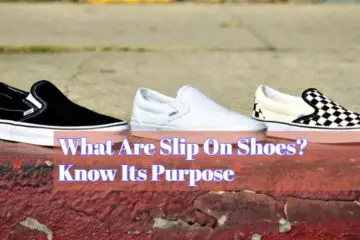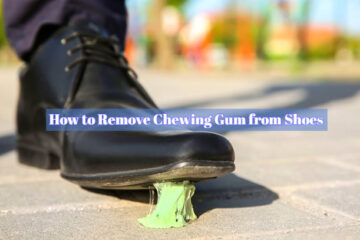For aspiring ballerinas, wearing pointe shoes is a rite of passage and a sign of progression in classical ballet. But for dance newcomers, pointe shoes can seem shrouded in mystery. How do they actually work to support a dancer en pointe? And are they as uncomfortable and damaging as they appear?
This beginner’s guide aims to demystify pointe shoes – from how they’re made to how dancers use them to push the boundaries of artistic expression. Read on to discover the secrets behind ballet’s iconic footwear.
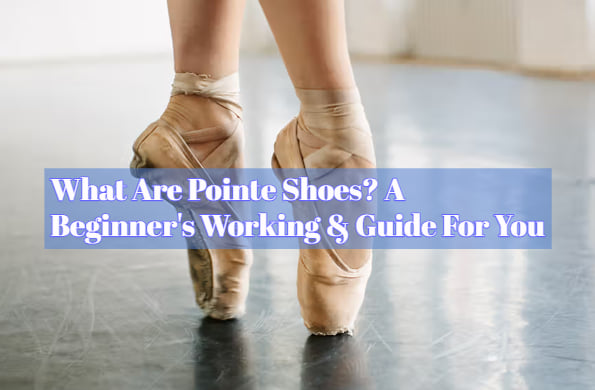
What Exactly Are Pointe Shoes?
Pointe shoes are a specialized type of shoe that allows ballet dancers to dance on the tips of their toes. The shoes have a boxed toe area that encases and supports the dancer’s toes when en pointe (on pointe).
Unlike regular ballet slippers, pointe shoes have a stiff sole to enable the dancer to transfer their body weight to the tips of the fully-extended feet. The exterior is made of layers of fabric, glue, and paste to create a rigid structure around the toes.
Inside, the toe box contains layers of burlap, paper, and cotton for added strength and structure. The insole is generally made of leather, cardstock, or plastic to provide stable support during pointework. Ribbons and elastic bands are sewn on to secure the shoe around the dancer’s ankles.
Pointe shoes allow dancers to create an ethereal, weightless effect as they effortlessly rise onto their toe tips. The shoes are an integral part of classical ballets, enabling ballerinas to dance en pointe and showcase their strength, balance and grace.
What Are Pointe Shoes Made Of?
Pointe shoes contain a mix of traditional and modern components to create a sturdy but flexible structure:
The exterior consists of protective layers of fabric like satin, canvas, and linen to form a smooth outer surface. This encases the inner shoe and toes.
The toe box houses and supports the toes en pointe. It comprises cardboard, paper, burlap, and cotton layered together for structure. Holes are drilled into the box for ventilation.
The insole acts as the floor of the shoe, supporting the foot. Leather, plastic, and cardstock are common insole materials.
The shank reinforces the arch area. Resin, fibreglass, leather, or plastic shanks add stability. Some shoes contain metal shanks for extra rigidity.
The sole is made of leather, rubber, or composite materials. It overlays extra cushioning pads around the ball of the foot for comfort.
Ribbons and elastic secure the shoe firmly around the foot and ankle. Some shoes also contain stretchable fabric like Lycra in the back seam.
How Do Pointe Shoes Work?
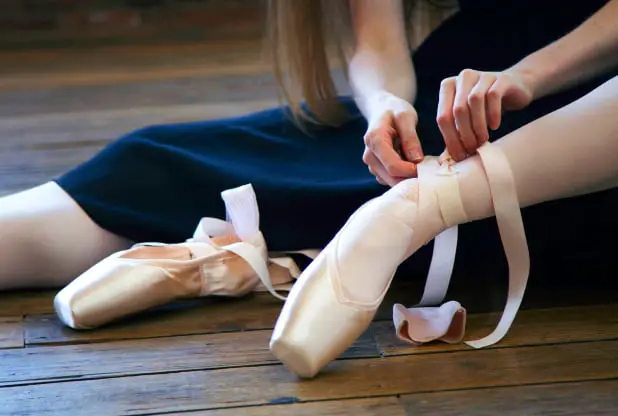
Pointe shoes allow dancers to balance their entire body weight on the tips of fully extended feet by:
- Providing vertical support – The reinforced toe box acts as a sturdy pedestal to enable an upright pointe.
- Distributing impact – Layers under the toe area cushion the load when landing jumps and drops.
- Stabilizing positioning – The extended shank, sole, and secure ribbon binding keep the foot in optimal alignment when en pointe.
- Reducing friction – The satin exterior enables smooth rotational movements without friction or drag.
- Absorbing shock – The metatarsal gel pads and sole cushioning assist in shock absorption when dancing en pointe.
The stiffness of the toe box area combined with the flexible sole allows the dancer to both balance steadily and transition smoothly through movements involving rolling up and lowering down from toe tips.
Are Pointe Shoes Uncomfortable for Dancers?
The common perception is that pointe shoes are excruciatingly painful to wear. But when sized and fit correctly, seasoned dancers report pointe shoes feeling secure and stable rather than uncomfortable. Here are some factors that influence pointe shoe pain:
Fit – Well-fitted pointe shoes contour snugly to the unique shape of each dancer’s feet without pinching or compressing. Poorly fitted shoes can restrict circulation and cause pain.
Breaking in – Brand new pointe shoes are softened up and moulded to the dancer’s feet during the breaking in process. Raw, unbroken shoes straight out of the box will feel rigid and uncomfortable until broken in properly.
Technique – Proper ballet technique distributes weight evenly across both feet rather than overload the toes. Poor technique strains the feet in pointe shoes leading to discomfort. Good technique minimizes achy toes and feet.
Strength training – Sufficient ankle and foot conditioning prepares the dancer for balancing en pointe without wobbling or pain. Weak, underdeveloped ankle stability will make the pointework feel uncomfortable.
Quality materials – Expensive, top-tier pointe shoes made from high-grade materials offer maximum comfort. Cheaper, low-quality shoes tend to be less comfortable for dancing on pointe.
So while discomfort can be inevitable when first starting pointework, this lessens over time with quality shoes, correct fitting, strength training, and proper technique.
Can Wearing Pointe Shoes Damage Your Feet?
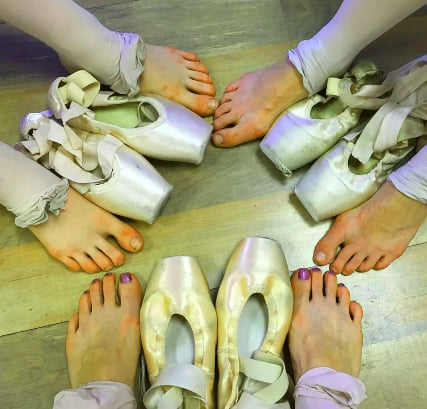
Due to their tightly bound structure, wearing pointe shoes long-term does pose some health risks for dancers’ feet:
Blisters and calluses – Friction inside pointe shoes leads to blisters and calluses on toes and heels. These can become painful if shoes are outgrown.
Corns and bunions – Repeated pressure on toes can cause corns and bunions over time.
Inflammation – Regular pointework can lead to inflamed tendons (tendonitis) like posterior tibial tendonitis caused by overly flexing feet.
Impact injuries – Jumping and landing en pointe puts substantial impact on feet. This can strain joints and bones leading to sprains or tiny fractures.
Arthritis – Years of dancing en pointe may accelerate joint degeneration and arthritis in the feet and ankles.
However, these damages are avoidable with preventative care and proper training. Rotating between two pairs of properly fitted pointe shoes gives feet adequate recovery time. Supplementing dance classes with specialized strengthening exercises conditions feet for the rigors of pointework.
Annual checkups monitor for potential foot damage, while taping, bracing, and orthotics provide extra support as needed. With appropriate care, well-trained ballerinas can safely balance and pirouette en pointe without damaging their feet.
Ballet Slippers vs. Pointe Shoes: Key Differences
While both worn for ballet, pointe shoes and ballet slippers are designed for distinct purposes:
Purpose – Ballet slippers are for dance steps performed on the soles of feet. Pointe shoes are only for dancing en pointe “on the tips of toes”.
Sole – Slippers have thin, flexible soles. Pointe shoes have rigid, structured soles for support en pointe.
Toe box – Slippers use thin fabric over toes. Pointe shoes enclose and pad toes in a hard, boxed toe area.
Secure fit – Slippers rely on the foot’s shape. Ribbons and elastic bands tightly secure pointe shoes.
Appearance – Slippers allow a flattened foot look. Pointe shoes extend the aesthetics of an elongated, tapered foot.
Wear – Slippers get minimal wear from ballet steps. Hard pointework wears down pointe shoes fairly quickly.
Movement – Slippers provide free, flexible foot movement. Pointe shoes support and stabilize pointe positions.
Price – Basic slippers cost around $20 – $30. High-quality pointe shoes average $80 to $100+.
While young dancers use both slippers and soft pointe shoes, advanced pointework requires the support of professionally fitted pointe shoes. Both are crucial footwear tools for all ballet students.
Popular Pointe Shoe Brands and Models
Today’s pointe shoe market offers an array of trusted brands designing shoes to meet varying foot types and technical needs:
- Freed of London: Handcrafted British brand. Favorites include the Studio line for beginners and the of London line for professionals.
- Capezio: American brand pioneering modern pointe shoe manufacturing. The Ovation and Hanami styles are popular.
- Bloch: Favored for comfort and customization. The Heritage and Superlative models integrate cutting-edge innovations.
- Gaynor Minden: Pioneered high-tech molded plastic shanks. Dancers rate their Elan, Soloist, and Symphony styles highly.
- Grishko: Russian company focused on anatomical design. Their 2007, Nova, and Fouette styles integrate shank variations.
- Sansha: European craftsmanship meets contemporary technology. Their Ovation, Sonstige, and Brava designs are accessible options.
- SoDanca: Affordable, quality designs for developing students. The Platinum and Superstar models work for both beginners and professionals.
With professional guidance, dancers can identify the right brand and style to match their skill level, foot shape, and technical needs.
Where to Buy Pointe Shoes
New pointe shoes must be professionally fitted in-person to ensure proper sizing and comfort. Local options for getting fitted include:
- Dance studios: Many have on-site stores or traveling pointe shoe reps for fittings.
- Dancewear shops: These stores employ fitters to size dancers and order customized pairs.
- Company outlets: Large dance companies have on-site pointe shoe shops for dancers.
- Backstage fittings: At performances and conventions, fitters work with cast dancers on designing their shoes.
Buying new pairs to maintain rotation is also essential. Once sized, reorders can be purchased:
- From local dance boutiques and studios
- Through online stores like Discount Dance Supply and Dancewear Solutions
- Directly via pointe shoe company websites
- Customized in-person at pointe shoe truck tour events
With a professional fitting, continuous education, and foot care, pointe shoes empower dancers to showcase grace, strength, and artistry en pointe. Demystify pointework by arming yourself with the right knowledge to progress safely and comfortably.
FAQ About Pointe Shoes
At what age can you start pointe?
Most dance experts recommend waiting until age 11-12 to commence pointework since the bones and joints in younger feet are still developing. Starting too early risks growth plate damage or misshapen feet.
How often do you need new pointe shoes?
2-3 times per month is ideal for most recreational dancers to allow for breaking in pairs and rotating to prolong wear. Professional dancers may need new pairs every 1-2 weeks.
How long does it take to break in pointe shoes?
Anywhere between 10-20 hours of wear over 2-4 weeks, combined with at-home prepping like bending shanks and pounding the toe box. The process molds the shoes to your feet.
How can you make pointe shoes last longer?
Rotate between 2-3 properly fitted pairs to distribute wear evenly. Jet glue can reinforce toes, while duct tape patches help damaged areas. Avoid over-drying shoes with heat or direct sunlight.
How tight should pointe shoes ribbons be?
Ribbons should be snug but not painfully constricting. About two finger widths of space between ribbons and ankles is ideal. Wrap ribbons firmly without cutting off circulation.
How do you care for your first pointe shoes?
Break them in gradually via barre exercises like relevés before wearing for pointework. Prep shoes at home by bending shanks and pounding toe box areas. Monitor for fit issues and repair damages promptly. Avoid over-drying.
When do you graduate from soft to real pointe shoes?
Making the transition involves evaluating ankle stability, alignment, and foot strength. If you can balance en pointe through basic exercises in soft shoes, talk to teachers about trying a beginner pointe shoe style like a soft block.
How do you prepare your feet for pointe shoes?
Conditioning exercises like relevés, doming, flexing and stretching build essential ankle stability and foot flex. Massaging feet, icing after class, taping blister-prone areas, and rotating pairs helps minimize discomfort and damage.
In Summary
Mastering ballet’s iconic pointe shoes requires tenacity and commitment. But demystifying key aspects around construction, fit, and usage establishes realistic expectations for advancing students. With passion, perseverance, and the right foundation, pointe shoes can become an empowering symbol of a dancer’s creative expression and artistic possibilities.


